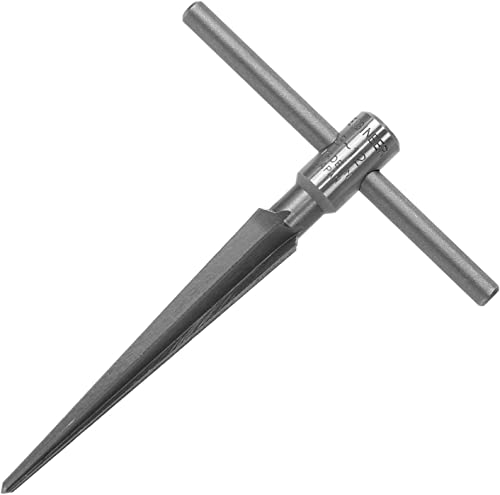Hand Reamer vs. Machine Reamer: Understanding the Key Differences
When it comes to reaming operations, different tools are used depending on the specific requirements and the nature of the job. Two common types of reamers that serve specific purposes are hand reamers and machine reamers. While both tools serve the same function of enlarging and smoothing holes, there are several differences between the two. Let’s take a closer look at these differences to understand when each tool is best suited for the job.
Design and Construction
Hand reamers are designed to be operated by hand, usually requiring the user to turn a handle to rotate the reamer. They typically consist of a tapered shank with cutting teeth along the edges. Some hand reamers may come with a square drive at the end for use with a wrench or T-handle. The size of a hand reamer is usually stamped on the shank for easy identification.
On the other hand, machine reamers are specifically designed to be used with machines such as drill presses or milling machines. They are made from high-speed steel (HSS) or carbide and come in various designs, including straight, spiral, and helical flute. Machine reamers have a longer shank compared to hand reamers and usually feature a shank with a reduced diameter to fit into machine tool spindles or chucks securely. The cutting edges on machine reamers are precision ground and have a higher number of flutes for efficient chip evacuation.
Application and Versatility
Due to their design, hand reamers are more versatile in terms of application. They can be used for both hand-guided operations and machine work. Hand reamers are commonly used for reaming holes in wood, plastic, and softer metals. They are also popular for creating tapered holes or reaming existing holes to a precise size. Hand reamers are favored when working on smaller projects or for situations where manual control is desired.
Machine reamers, on the other hand, are primarily used for machine-guided operations. They are ideal for high-precision reaming tasks where consistent hole size and finish are vital. Machine reamers are commonly used in metalworking, automotive, aerospace, and other industries that require precise tolerance. The use of machine reamers ensures repeatable results and higher efficiency, especially when dealing with larger production runs.
Speed and Efficiency
When it comes to speed and efficiency, machine reamers have the upper hand. Using machine reamers with proper machine tools significantly speeds up the reaming process. The high-speed rotation of the machine and the precision of the cutting edges on the reamer allow for quick and accurate hole enlargement. Machine reamers are designed to handle higher loads and effectively evacuate chips, making them ideal for mass production applications that require rapid reaming.
Hand reaming, on the other hand, is a slower process that requires manual effort. While it offers more control and versatility in certain situations, it can be time-consuming and physically demanding for larger projects. Hand reaming may be preferred when dealing with delicate materials or smaller jobs that do not justify the use of a machine.
Cost and Accessibility
In terms of cost, hand reamers are generally more affordable compared to machine reamers. Since they do not require specialized machinery, hand reamers are readily accessible and can be easily used by hobbyists or DIY enthusiasts. Hand reamers are available in a wide variety of sizes and designs, making them a cost-effective choice for small-scale projects or occasional use.
Machine reamers, on the other hand, require access to machine tools such as drill presses or milling machines. The initial investment for these machines can be significant, making machine reaming more suitable for professional workshops or large-scale manufacturing operations. Additionally, machine reamers can be more expensive due to their precision manufacturing, high-quality materials, and specialized designs.
Maintenance and Longevity
Maintenance requirements and the expected lifespan of the reamer also differ between hand reamers and machine reamers. Hand reamers are relatively easier to maintain since they do not involve complex mechanisms or require specific maintenance procedures. Keeping the cutting edges sharp and lubricating the reamer during use are usually sufficient to ensure optimal performance and longevity.
Machine reamers, on the other hand, may require more attention to maintenance. The precision-ground cutting edges can be more susceptible to wear and tear, especially when used at high speeds or on tough materials. Regular inspections, regrinding, and proper lubrication are essential to prolong the lifespan of machine reamers and maintain their cutting performance.
Choosing the Right Reamer for the Job
When it comes to selecting between a hand reamer and a machine reamer, it is crucial to consider the specific requirements of the job. Hand reamers are more versatile, accessible, and affordable, making them suitable for smaller projects or situations where manual control is desired. Machine reamers, on the other hand, excel in high-precision applications, offer higher speed and efficiency, but require access to machine tools and a larger investment. By understanding the differences, professionals and hobbyists alike can choose the right reamer for their specific needs.






